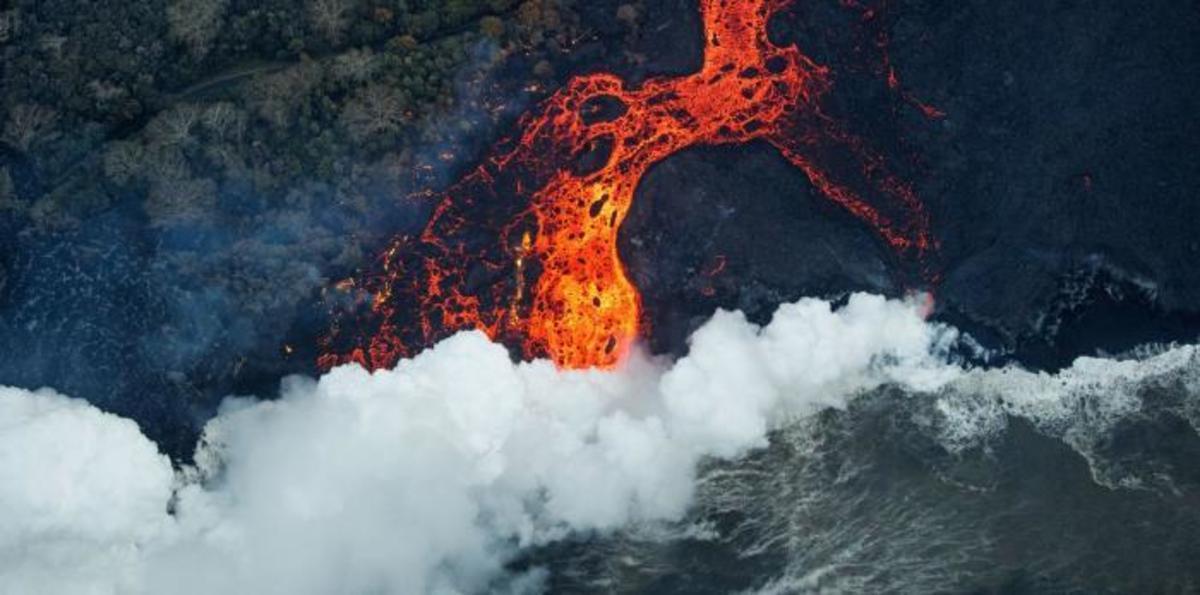How a Volcanic Eruption Set Off a Phytoplankton Bloom
How a Volcanic Eruption Set Off a Phytoplankton Bloom

Read the full story at The New York Times Science
"The eruption last year of the Kilauea volcano in Hawaii produced the equivalent of 320,000 Olympic-size swimming pools of lava. Much of it ended up flowing into the Pacific Ocean, creating plumes of acidic, glassy steam in the process," writes Robin George Andrews for The New York Times Science. A consequence of this is that the eruption triggered a phytoplankton bloom, mostly composed of diatoms. The work, which was published in Science this week, was co-led by MIT EAPS alumni Nicholas Hawco, with contributions from Stephanie Dutkiewicz, Mick Follows, Chris Hill, Oliver Jahn, and John Casey from EAPS. "The study of the Kilauea-adjacent phytoplankton bloom is believed to be the first time researchers have shown that volcanic activity can drive a bloom in waters lacking that vital nutrient," the NYTimes notes.
Science Magazine reports: They found subsurface chlorophyll maxima not visible by remote sensing, performed transcriptome and N isotope marker analysis, and measured nutrients, partitioning of biomass into different organisms, and primary production. Much of the data are corroborated by physical modeling of the ocean dynamics. The authors conclude that the plume was fed by the lava heating subsurface water and triggering upwelling of deepwater nutrients to the surface rather than by direct injection of micronutrients from lava.
Story Image: Lava entering the sea at Malama Flats in Pahoa, Hawaii, in May 2018. (Credit: Bruce Omori/EPA, via Shutterstock)